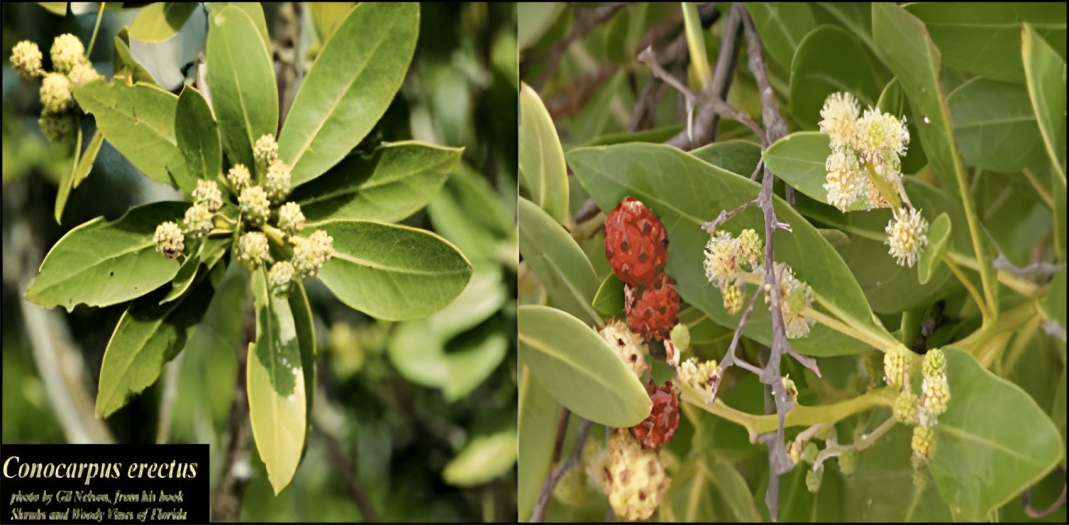





Copyright infringement not intended
Picture Courtesy: www.researchgate.net
Context: The state government of Gujarat has banned the plantation of Conocarpus trees, an exotic mangrove species, in both forest and non-forest areas due to their adverse impacts on the environment and human health.
Details
|
Benefits |
●Dense canopy and dark green leaves provide shade and enhance the aesthetics of the surroundings. ●Tolerant of saline, alkaline soils, making them suitable for coastal areas and poor soil conditions. ●Able to withstand low water conditions, making them ideal for planting in arid regions. ●Resistant to strong winds, making them valuable in windy areas as windbreaks. ●Attracts various wildlife, including birds, butterflies, and bees, enhancing biodiversity. |
|
|
Drawbacks |
●Deep roots can potentially damage sidewalks, roads, and sewer lines, leading to infrastructure issues. ●Produces a large amount of pollen, causing allergies in susceptible individuals, which can be a concern for public spaces. ●Considered invasive species in certain regions, outcompeting native vegetation and disrupting local ecosystems. |
|
|
Distribution |
●Conocarpus is a genus comprising two species of flowering plants in the family Combretaceae, primarily found in tropical regions worldwide. These plants, ranging from dense multiple-trunked shrubs to small to medium-sized trees, grow to heights of 1 to 20 meters. ●Conocarpus erectus: This species is native to tropical America, stretching from Bermuda, the Bahamas, and southern Florida through the West Indies. ○It also thrives along the Gulf of Mexico, the Caribbean, and the Atlantic Coasts, extending southwards to Brazil. On the Pacific Coast, it is found from Mexico to Peru, including the Galapagos Islands. ○It grows along the western African coast, ranging from Senegal to the Democratic Republic of the Congo. While rare, it has been sporadically introduced to other regions. ●Conocarpus lancifolius: Native to Somalia and Yemen, this species is cultivated in eastern and northern Africa as well as the Arabian Peninsula. |
|
Conclusion
|
PRACTICE QUESTION Q. Statement 1: Conocarpus trees are native to Gujarat, making them an essential part of the state's ecosystem. Statement 2: Conocarpus trees, while having benefits, have been banned in Gujarat due to their negative effects on human health and the environment. Which one of the following is correct in respect of the above statements? A) Both Statement-1 and Statement-2 are correct, and Statement-2 is the correct explanation for Statement-1. B) Both Statement-1 and Statement-2 are correct, and Statement-2 is not the correct explanation for Statement-1. C) Statement-1 is correct, but Statement-2 is incorrect. D) Statement-1 is incorrect, but Statement-2 is correct. Answer: D Explanation: Conocarpus trees are not native to Gujarat. They are an exotic species that was introduced to the state in the early 20th century. Conocarpus trees are fast-growing and can thrive in a variety of climates, making them a popular choice for planting in public spaces and urban areas. However, they have also been shown to have a number of negative impacts on the environment, including: ●Displacing native plant species ●Altering soil chemistry ●Damaging infrastructure with their deep roots ●Producing pollen that can cause allergies Recently, the Gujarat government banned the planting of Conocarpus trees in forest or non-forest areas, citing their adverse impacts on the environment and human health. |







© 2025 iasgyan. All right reserved